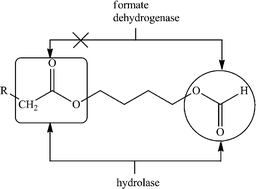Formate dehydrogenase - a biocatalyst with novel applications in organic chemistry
Abstract
In the field of industrial biocatalysis,

* Corresponding authors
a
Institute of Technical Chemistry, Department of Chemistry and Physics, Freiberg University of Mining and Technology, Freiberg, Germany
E-mail:
martin.bertau@chemie.tu-freiberg.de
Fax: +49 3731 39-2324
Tel: +49 3731 39-2384
In the field of industrial biocatalysis,

 Please wait while we load your content...
Something went wrong. Try again?
Please wait while we load your content...
Something went wrong. Try again?
P. Fröhlich, K. Albert and M. Bertau, Org. Biomol. Chem., 2011, 9, 7941 DOI: 10.1039/C1OB06064C
To request permission to reproduce material from this article, please go to the Copyright Clearance Center request page.
If you are an author contributing to an RSC publication, you do not need to request permission provided correct acknowledgement is given.
If you are the author of this article, you do not need to request permission to reproduce figures and diagrams provided correct acknowledgement is given. If you want to reproduce the whole article in a third-party publication (excluding your thesis/dissertation for which permission is not required) please go to the Copyright Clearance Center request page.
Read more about how to correctly acknowledge RSC content.
 Fetching data from CrossRef.
Fetching data from CrossRef.
This may take some time to load.
Loading related content
